#30th dynasty
Text


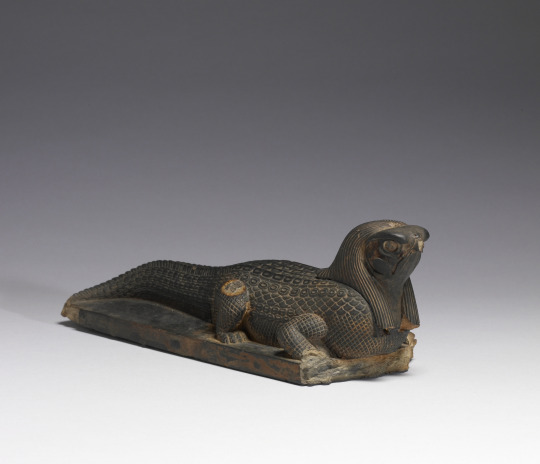
~ Statue of a Crocodile with the Head of a Falcon.
Culture: Egyptian
Date: ca. 380-250 B.C.
Period: Late Period-early Ptolemaic Period; 30th Dynasty
Medium: Steatite
#ancient#ancient art#history#museum#archeology#ancient egypt#ancient sculpture#ancient history#archaeology#Egyptian#egyptology#Egypt#crocodile#falcon#ptolemaic#late period#30th dynasty#steatite#ca. 390 b.c.#ca. 250 b.c.
3K notes
·
View notes
Text

Making of Lily Perfume
The Ancient Egyptians loved beautiful fragrances. They associated them with the gods and recognized their positive effect on health and well being. Perfumes were generally applied as oil-based salves, and there are numerous recipes and depictions of the preparation of perfume in temples all over Egypt.
Relief depicting women squeezing oil from lily flowers in a press for use in perfume. Fragment from a decoration of a tomb. Limestone, 4th century BC. Now in the Louvre. E 11162
Read more
10 notes
·
View notes
Text

AN EGYPTIAN RED GLASS INLAY HEAD
30TH DYNASTY/EARLY PTOLEMAIC PERIOD, CIRCA 380-250 B.C.
Facing left, with long neck and finely carved features, the corner of the mouth indented, the upper lid with finely incised fold.
Height 4 cm.
#AN EGYPTIAN RED GLASS INLAY HEAD#30TH DYNASTY/EARLY PTOLEMAIC PERIOD#CIRCA 380-250 B.C.#glass#ancient egyptian glass#ancient artifacts#archeology#archeolgst#history#history news#ancient history#ancient culture#ancient civilizations#ancient egypt#egyptian history#egyptian art
98 notes
·
View notes
Text

An Egyptian Blue Glazed Faience Ushabti for Nes-Ptah
Late Period, 30th Dynasty, ca. 380-332 BC
from Sands of Time Ancient Art
142 notes
·
View notes
Text

“He could still clearly picture him as a little boy, surrounded by his entourage of ox-horns who were just grateful to be in his presence”
Cao Cao and Yuan Shao at Cao Caos 30th birthday party (t-minus 9 hours before the han dynastys most devastating hangover)
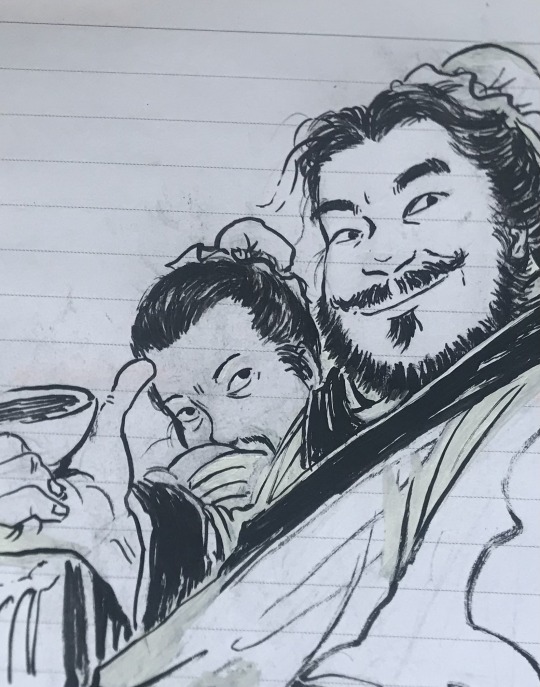
27 notes
·
View notes
Text
Incest on the Nile, Part One
Oh, the Egyptians. One of the greatest ancient civilizations. Remembered by their mummies, pyramids and well, incest. Not only in the myths but in the man pharaonic lines.
"It's incest! Like the Kings and Queens of Ancient Egypt!"
As said by Melanie, from The Magic Toyshop, upon seeing a brother and sister kissing. I had full intention of making a gif from this scene in movie, but the version I can find on youtube is of such bad quality that I decided it's not worthy.
Either way, the point is, the Egyptian Pharaohs were famous for inbreeding, and their gods reflect that. Specially because the Pharaohs were seen as being an incarnated god, so it makes sense they do as the gods did and marry their sisters. Besides, incest helps with the concentration of power, which is something monarchs love.
According to the The Bremner-Rhind Papyrus, which recounts the Heliopolis Creation Myth. There was the first god, who narrates the text and is left unnamed, but through other sources we can assume to be Atum, who is often associated with Ra, and through that association, to Amun. This first god created Shu and Tefnut and this lineage created all the other major gods. The texts says:
"I came forth from the roots, I created all reptiles and all that exists among them. Shu and Tefnut begat Geb and Nut, and Geb and Nut begat Osiris, Horus Mekhantenirti, Seth, Isis, and Nephthys from the womb, one after the other, and they begat their multitudes in this land."
Shu and Tefnut
Shu, god of air, and Tefnut, goddess of moisture, are the children of Atum. An account of their birth, in which they are said to be twins, is given in the pyramid text of Pepi I, who ruled between the 24th and 23rd centuries BC:
"Atum is the one who came into being as one who came (with penis) extended in Heliopolis. He put his penis in his fist so that he might make orgasm with it, and the two twins were born, Shu and Tefnut."
In the pyramid text of Unis, who ruled circa 2345–2315 BC, the two are mentioned to be, together, considered the "Dual-Lion":
"Dual-Lion, who made their two gods and their body themselves—that is Shu and Tefnut, who made the gods, begot the gods, and set the gods."
Tefnut and Shu were frequently represented as a dual-headed being, so I would dare to say they are quite co-dependent, like those couples to never leave each other side. Execpet that one time Tefnut left Shu to go on a killing spree in Nubia. A text known as the Leyden Papirus narrates "the mission imposed by R[a] on Thoth and Shu to conciliate Tefnut, his daughter, who as a result of a quarrel has assumed the form of a lioness and withdrawn to the Nubian desert; the two gods transform themselves into apes, pacify the goddess by the magic and eloquence of Thoth, and return with her to Egypt" (West, 1969).
Geb and Nut
Geb, god of earth, and Nut, goddess of the sky, were the children of Shu and Tefnut, and they were in love. However, the sun god (be it Ra, Amon or Atum) feared that the children of this union would usurp the throne of from, so he placed a curse that forbid her from giving birth in any day of the year, which had 360 days. Luckily for Nut, Thoth helped her, by getting the light from the moon god, Khonsu, and using this light to make 5 extra days in the year. On each day, Nut gave birth to a different child: Osiris, Horus, Set, Isis and Nephthys. The sun god didn't like this a bit and ordered Shu to physically hold Geb and Nut apart so they could no longer have children.
Geb and Tefnut
Some traditions, starting in the 30th dynasty, claim that Geb married his mom, Tefnut, after his father forcefully split him from Nut. In the Shrine of Ismailia, better known as the Shrine of El Arish, there's an inscription that recounts Shu's battle against Apep, and that Geb used his father's absence to take control of the Kingdom. The problem is that most translation of this text are in German, I don't speak German. The little I could translate, with Google's help said something like:
"Geb looked at his mother; he desired her very much, and his heart longed for her, and therefore he travelled the earth in great suffering [...] he found her in that place called Pecharti; then he seized her by force. Now there arose a very great uproar in the palace."
However, other version don't include the rape. According to Jørgensen (2014) the Tebtunis Mythological Manual, which dates to the 2nd century CE, says that:
"He lay with his mother Tefnut, so that they were doing harm to Shu."
Maybe Tefnut consensually had sex with Geb, since the text describes "they" both a doing harm to Shu. But, more likely than anything else, considering that this is such a late myth, this story shouldn't be considered as reflective of Geb and Tefnut's relationship. Scholars speculate that Geb taking Tefnut as his wife is a way to symbolize the transfer of kingship of Egypt, with Geb taking both the crown and the wife of Shu.
The Curious Case of Hathor
I think that it's a well established fact that myths tend to change with time. Hathor is the victim of many of theses changes. It seems that initially, in the Old Kingdom, she was thought of as being the wife of Ra. In this position, she was the mythological mother of the Pharaoh, a role that later would be filled by Isis. However, she is also conflated with Sekhmet, daughter of Ra, and fills the role of the Eye of Ra. You know the story about Teftnut going on a murder spree? Sometimes, it's Hathor who is the one to cause devastation. On the complete polar opposite, she's also said to be the mother of Ra, but in a solar cycle type of deal that each day she births him and each night he births her and so they are forever reborn.
Hathor is also credited as being the mother of Horus, possibly having had this role for even longer than Isis, but after Isis rose to prominence, she appeared in the ole of a care taker to Horus, nursing him with her milk (she's a cow goddess) while he was hidden from Set. However, in some locations, she is linked to Horus not through motherhood, but through marriage, being his wife.
Interestingly, Hathor never seem to occupy two of these roles at the same time. She's never a mother-wife to Ra or Horus. Her role seems to change accordingly to what is 'popular' at the time. This is why I'm including this as a curious case of incest, because as far as I can find, she's never married to her son. She just happens to be married to two someone who are sometimes said to be her son.
In my own personal syncretisation of all this versions of Hathor, I would say she's the daughter and consort of the Ra, who dies every night and she rebirth him every day, making her his mother too. Then, when kingship passed to Horus, she married him, having also have nursed him in his infancy (or maybe he is her biological son from her union with Ra). This would be a nice and neat way to make sense of it all, but mythology is rarely nice and neat.
References
Allen J. P. (2015). The ancient Egyptian pyramid texts (Second). SBL Press.
Faulkner, R. O. (1938). The Bremner-Rhind Papyrus: IV. The Journal of Egyptian Archaeology, 24(1), 41–53.
Jørgensen, J. K. B. (2014). Egyptian Mythological Manuals: Mythological structures and interpretative techniques in the Tebtunis Mythological manual, the manual of the Delta and related texts. Det Humanistiske Fakultet, Københavns Universitet.
Wilkinson R. H. (2003). The complete gods and goddesses of ancient Egypt. Thames & Hudson.
West, S. (1969). The Greek Version of the Legend of Tefnut. The Journal of Egyptian Archaeology, 55, 161-183.
#proship#shipcest#parent x child#egyptian mythology#brother x sister#sibcest#mother x son#father x daughter#mythology review
26 notes
·
View notes
Text
It's gonna be a long one y'all
A Matter of Chance -13
The birds cooed their customary morning calls, waking the forest inhabitants save the two who never slept
Nandini’s head buzzed with worried, hopes and ideas for tackling her situation.
Aditha’s head buzzed for a completely different reason
Nandini hadn’t yet given him an answer.
She’d retreated into her own world after listening to him and he was terrified.
He’d not given her much to go on except his affections. The thought of catty palace women who donned the finest, brightest clothing but had the ability to sting and bite as any predator sent her running he guessed.
Heavens, she probably still saw him as a delusional teenager who hoped for the impossible.
‘Tis true he turns into a lovesick lad when she’s mentioned – but that doesn’t mean the intervening years hadn’t affected him.
Years in the battlefield made him a cynical, weary old man before he could complete his 30th summer.
He had no patience to tolerate rose eyed young ladies far removed from reality. Nor was he willing to suffer scheming wannabe princesses who sought titles, jewels and more for their clan.
No fault of these ladies, he thought, not all young women can advance themselves without marriage.
War made him realise that life was fleeting and ideals of peace, love must be preserved no matter the cost.
And he wasn’t willing to let go of the only one who held his heart.
These philosophical musings were just an attempt to prevent his spiral into worrying about her lack of response.
---------------------
Nandini decided this was it. Krishna had not tested her with so much heartbreak since childhood for nothing. Afterall, why hadn’t these experiences broken her fully? Why did hope remain in her heart?
She’d decided that she wants to remain by Aditha’s side. He’d promised to protect her and she had nothing to lose. She feared her piety turning into a curtain for misery, more than dreading any royal dynasty.
Oh lord! What was she to do? Who must she tell first- her Anna or foster parents?
She, in her nervousness, bounced into a worried Aditha and started regaling him with plans
“We shall be engaged at the forest Krishna temple! Then we can head out Nay! We must visit your barracks first. Do you wish to marry here itself- or do you have another temple in mind?”
Aditha’s sleep deprived brain took the barest moment before it was flooded with euphoria
She still loves me. She wishes to marry me
He’d yell it to all the surrounding villages if he could.
He embraced her. Nothing mattered more. He dreaded to think what his life would be without her.
The couple giggled at their own reactions and decided to head to the temple for morning prayers.
This was Nandini’s first time walking unaided since her injury and she wished to thank Krishna for her recovery – both of body and heart.
She noticed Aditha unabashedly gawk at her during her walk, interspersed with moments of worry when she stumbled.
They prayed at the temple. Nandini cleaned the environs before lighting the lamps and placing fresh flowers.
She offered the deity fresh fruits and milk before singing prayers as Aditha looked on peacefully.
The hopeful couple thanked God for reuniting them and sought His blessings for their union.
They returned to the hut to plan their next course of action. The royal family’s disapproval stemmed from her lack of identity and the fear of people not accepting a commoner as queen.
Nandini had long lost interest in finding the identity of her father. She’s lived far too long thus for his identity to have any bearing on her life.
Even a king siring her won’t undo all her life’s pain, she wryly mused
Her foster family would worry given their past entanglement – she needed to maintain a foothold before telling them.
Thirumalai anna- her dear foster brother- was her only hope
On the other side , Aditha too thought of someone who could help him- his dear friend Vallavarayan Vanthiyadevan
A romantic at heart, awareness of his Liege ‘s heartbreak and in possession of cartloads of charm- he was the right man for this job.
Aditha said he’d take her to his barracks. He explained it’d be better to reveal the news in a controlled fashion to those around him.
Nandini agreed, thinking it’s almost time for her brother’s customary visit.
She’d always known her brother’s career was not quite as it seems. The secrecy and vagueness in his description, coupled with an erratic schedule made one thing clear.
He was extremely important to someone but can’t reveal how.
-------------
Aditha helped her pack the contents of her hut into cloth bags and helped her up his horse.
She was wrought with nervousness- how was everyone going to react? Those who mocked her as a child certainly won’t spare her now!
Her guilt over leaving behind the Krishna temple, that gave her livelihood and a purpose to live on too weighed on her.
En route through the village, she stopped by the old priest’s house. Few years ago, he’d taken pity on the pious Mournful looking young lady and offered her this responsibility.
She bid Aditha to wait outside as she conversed with the elderly gentleman. She hesitantly explained her situation seated on the thinnai, hoping he won’t see her as a deserter.
The old man’s eyes shined with comprehension. “Wheb I first saw you, you seemed to be completely detached and aloof. I had hoped Krishna would light our life with purpose and of course love. This must be fate- it is His will” he said and granted her leave with a blessing.
Her heart seemed a little lighter as they journeyed on. Aditha said he’d written to the soldiers to prepare for a guest but hadn’t yet given them details.
Aditha’s horse neighed as they approached the destination, with the guards outside immediately recognizing their master. As they neared the barracks, Nandini could see soldiers realize there was a woman atop the crown prince’s horse. They began lining up at the entrance.
Her heart raced “heavens, so many people”
“What if they misunderstand my presence here” “how can I handle the disapproval of so many?”
She instinctively accepted Aditha’s hand and descended. He began before she could worry more “By Shiva’s grace, I have found my ardhangini. I am extremely pleased for she has accepted my suit and wished to introduce her to all my brothers in arms. Gentlemen, behold your future pattathu arasi (empress)”
Various qualities are attributed to military barracks; silence wasn’t one of them. Nandini’s stomach lurched..
The concurrent thunderous cheering sent her into a mix of relief, joy and anxiety.
The soldiers who’d long resigned that their master, known for his bravery and honor, would never wed unless for political reasons were gleeful beyond relief.
War and administration were Aditha’s only priorities. He tried sharing the joys and sorrows of all the soldiers but his air of melancholy didn’t go unnoticed over the years.
They were surprised that he’d made a love match and were determined to make it work – even if others didn’t like a commoner wedding a prince.
Vanthiyadevan, lord of Vallam and Aditha’s dear friend, could barely believe his eyes when he received his message.
Lover of love itself, he had plans up his sleeve.
He marched forward to greet the couple with his signature grin “Welcome Welcome to your Highness and your lovely fiancée”
Nandini calmed down slightly seeing a friendly visage. “That was a glorious welcome, friends, now let’s head inside “ boomed Aditha’s voice.
The couple and some close associates entered the largest tent of that encampment. Nandini felt terribly out of place – a tent filled with enough finery to rival a palace.
She seated herself on a velvet lined stool, noticing the persian rugs, gold chalices and engraved furniture, trying not to let her insecurity show.
Aditha noticed and came to stand by her side, laying a hand over her shoulder. He was flanked by his 2 friends and grandfather.
Chieftain Malayaman certainly wished for a noblewoman to marry his eldest grandson. But witnessing his pain and desolation firsthand made him grateful for any joy in his grandson’s life.
Nandini noticed the reactions of the three new men, the elderly warlord who seemed to judge her without animosity, Vanthiyadevans friendly face welcoming her and the last one…. Parthibendran tried to seem civil but failed to hide his awe of her beauty.
He openly gaped at her, much to her annoyance. Her betrothed seem to notice and decided to draw attention “ you’re all here because you’ve stood by me over the years. I need your assistance once again”
Malayaman professed his support but requested them to marry after reaching the Thanjavur. “It will strengthen the validity of your union in the public's eyes “ he insisted. Nandini felt Aditha squeeze her shoulder, so she agreed when he said they shall consider it.
Vanthiyadevan merely wished them once again with a cheeky smile and said mysteriously “Do not worry my lady. While I cannot predict the nobility, the people will welcome your presence!”
Nandini highly doubted that, but decided not to contradict. Even though Parthibendran was testing her patience, she didn’t wish to lose a potential ally- regardless of which of her virtues drew them in.
@nashibirne @nspwriteups @vibishalakshman @thelekhikawrites @dr-scribbler @kovaipaavai @budugu @dosai-maavu @matka-kulfi @nirmohi-premika @yehsahihai @curiousgalacticsoul @rang-lo @harinishivaa @dr-scribbler @chiyaanvikram @celestesinsight @inveter @deepti1011 @vidhurvrika @itszhunotz @babayagahunt @thegleamingmoon @maisadalawa @ragkee @inlovewithfictionalbeings @happysharkdragon @gowrimenonop-1 @ramcharanobsessed
#ponniyin selvan#aditha karikalan#nandini x aditha#nandhini#ponniyin selvan fanfiction#nandini x karikalan#nandini
33 notes
·
View notes
Text

On November 17th 1292 John Balliol acceded to Scottish throne.
The Balliol dynasty has received, for the most part, a brief mention in Scottish history, but it has remained merely peripheral in the shadows of the Bruce dynasty and the equally powerful Comyn family.
So who were the Balliols?
At the turn of the last millennium, the 10 hundreds, the medieval Balliol family that played such an important part in the history of Scotland, lived in Bailleul-en-Vimeu in Picardie near Armentieres (Somme), from whence the name Balliol derives, and where they owned estates and castles. Their main castle (no longer in existence), was in the Bois de Bailleul south of Bailleul-en-Vimeu, and now part of the Chateau Coquerel estate.
Their ties to England began when they were granted land in England after the landing of William the Conqueror, whom they had supported in his quest for the English throne. Please don't hold that against Balliol, the Bruces also owned large estates in England.
The original land grants to the Balliols were in Northumberland and they subsequently made their principal base in England at Barnard Castle, built by Barnard de Balliol, where its imposing ruins survive at the Teesdale town of Barnard Castle near Durham, as seen in the first picture. Bernard de Balliol, who was born in Picardie in 1105, was the first of his family to receive lands in the lowlands of Scotland. This was at the time King David Ist distributed large estates in Scotland to his Anglo-Norman Friends, such as the de Brus (the Bruce family), Fitz-Alan (which became the Stewart Clan) de Bailleul (the Balliol family) de Comines (the Comyn family) and many others who thus became landowners on both sides of the border.
The Balliol's were an influentual family, and the marriage of John de Balliol to Devorguilla in 1233, brought together two substantial families. She was a direct descendant of David I, King of Scotland, and daughter of Lord Allan de Galloway, it was through Devorguilla that John Balliol's claim to the Scottish throne arose.
In 1290, Queen Margaret , Maid of Norway died leaving a disputed succession in Scotland which led to the first interregnum (a situation with no King). There were thirteen different claimants to the Scottish throne, among whom was John Balliol who designated himself as "Heir to the Kingdom of Scotland". As well as David I the Balliol claim had connections to Kings Malcolm IV and William I the Lion.
His main rivals for the throne were Robert de Bruce (father of king Robert the Bruce I), and John Comyn. Edward claimed the right to intercede as feudal lord of the Scottish Kings through their Anglo-Norman roots and arbitrated between the claimants. Edward, after a years discussions with his court accepted Balliol's claim, and on November 17th 1292, John Balliol became King of Scotland and acceded to the Scottish throne at Scone Abbey, Perthshire.
Balliol did homage to Edward as his Lord, but most other Scot's resisted Edward's demands for military service and Bailliol was unable to unite his people, and became rebellious. In June 1294 Edward demanded military aid from Scotland for his projected war in Gascony. The Scottish reaction was to conclude a treaty of mutual aid with the French. In January 1296 the Scots under Balliol raided northern England. Edward reacted quickly; he took Berwick on March 30th , Castle after Castle fell, and in the Battle of Dunbar, Balliol was defeated. John resigned his kingdom to Edward at Montrose. He was stripped of his arms and knightly dignity in a ceremony which later earned him the name of "Toom Tabbard" or Turncoat. He was forced to abdicate, leading to the second interregnum and was imprisoned in the Tower of London for treason, along with his supporters, John, Earl of Athol, John Comyn, and Sir John de Montieth. Balliol's ruin was complete and final, It involved the confiscation of his estates, excommunication and eventually exile.
Edward removed the Stone of Destiny, on which the Scottish kings were crowned, and took it to England where, until recently, it was kept under the throne in Westminster Abbey.
Meanwhile William Wallace, in the name of Balliol, continued his campaign against the English and incited a rebellion in 1297, defeated the English army at Stirling Bridge, and harassed England's northern counties. The next year Edward defeated Wallace at the Battle of Falkirk but encountered continued resistance until Wallaces' capture in 1304. He had been betrayed by de Monteith, to earn his freedom from the Tower and to become the Earl of Lennox for this betrayal. 5
After three years imprisonment Balliol was eventually released from the Tower in 1299 on the intercession of the Pope, and was banished to France in exile. He died at the Chateau Galliard in France in 1313 and is thought to be buried in the Church of St Waast, Normandy. A John de Bailleul is interred in the church of St. Waast at Bailleul-sur-Eaune. This may or may not be the Scottish King.
There is much more detail about The Balliol's here http://earthfriendarts.tripod.com/Baliol.htm
14 notes
·
View notes
Photo
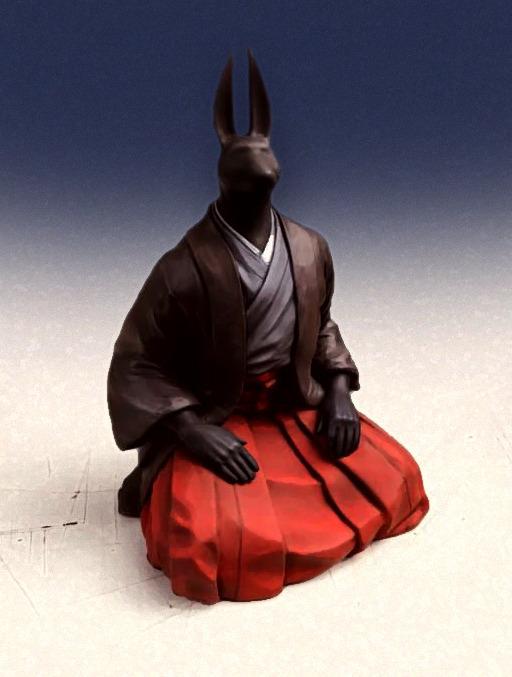

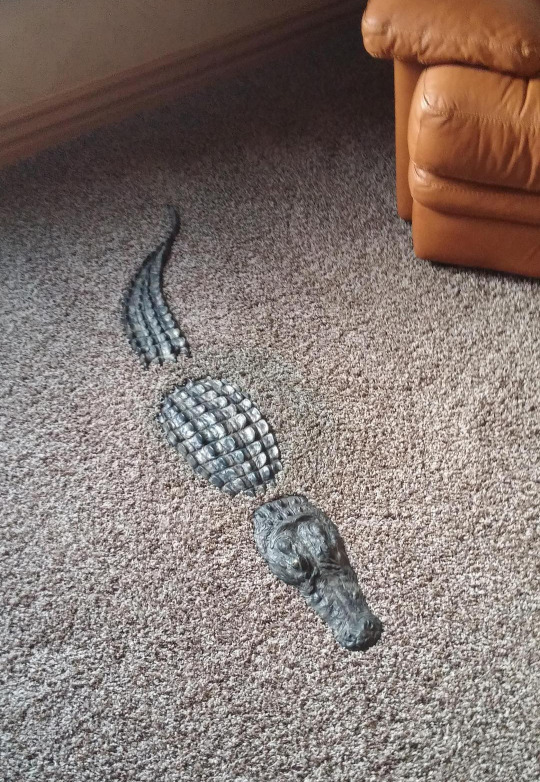




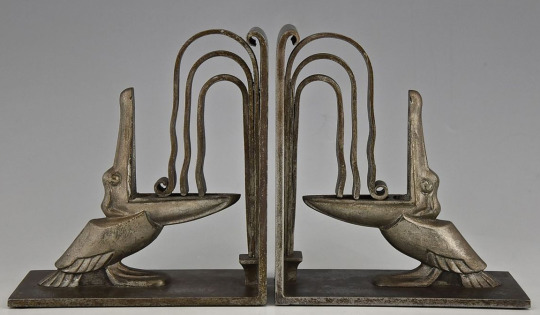





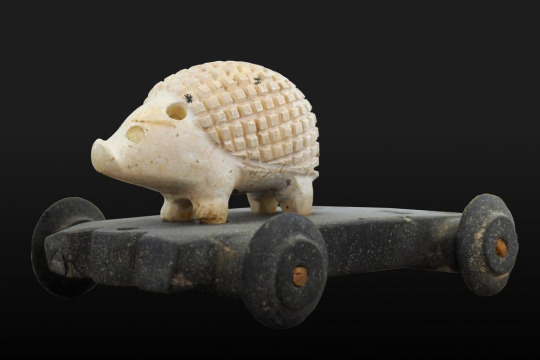
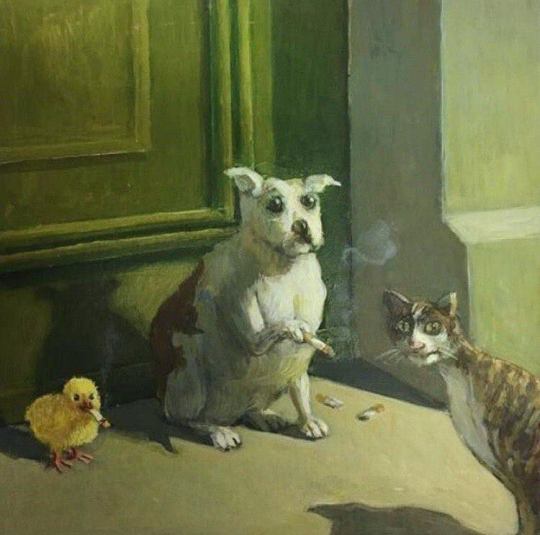

Joanna.Karpowicz (Polish, b.1976) - Anubis - painted resin
Redmer Hoekstra (Dutch, b.1982) - Gordeldier (Armadillo) pencil - 2012
Carpet Crocodile
Baboon - glazed limestone - 30th Dynasty (Ptolemaic Period) - c.380-30 BCE
Guiness Time (Dungeness crab) - advertising poster
J.K.Brown aka John Kennedy Brown (Welsh, b.1979) - Bird - scrap metal
Wild Boar - ceramic - Haniwa, Kofun Period - Japan - 3rd-7th centuries CE
Edgar Brandt (French, 1880-1960) - Pelican Bookends - cast and wrought iron - 1924
Maico Akiba (Japanese) - Sekai (World series: Armadillo) - plastic found objects, mixed media
Bernard Vié (French, b.1947) - Catimini - cast bronze - 2009
Shaun Tan - Companion Animals - painting
Alfredo Biagini (Italian, 1886-1952) - Red Vervet Monkey - cast bronze - c.1926
John Brosio (American, b.1967) - Viper Fish (study) - oil on canvas - 2012
Hedgehog - limestone statuette on wheeled asphalt - Iran - c.1500 BCE
Michael Sowa (German, b.1945) - No Go Area - painting - 2008
Pair of Turkey Vessels - ceramic - Nayarit, Mexico - 4th century BCE
#art by others#other's artwork#painting#sculpture#ceramic#print#bronze#wroght iron#limestone#resin#mixed-media#found objects#Michael Sowa#John Brosio#Alfredo Biagin#Shaun Tan#Bernard Vié#Maico Akiba#Edgar Brand#Redmer Hoekstra#J.K.Brown#Joanna.Karpowicz#ancient#antiquity#crittery
76 notes
·
View notes
Text


And then it was bought by me
Taylor Swift performing The Last Great American Dynasty at The Eras Tour on April 30th, 2023 - (x)
#taylor swift#the eras tour#atlantatstheerastour#tswiftgifs#tswift gif#tswiftgif#taylor swift gifs#tlgad#the last great american dynasty#folklore era#folklore album#tswiftedit
24 notes
·
View notes
Text
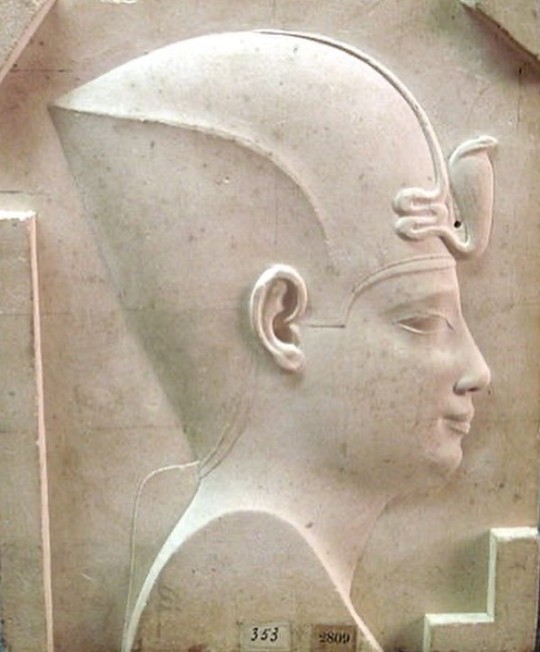
A sculptor's relief model, dating from the 30th dynasty- Ptolemaic Period (4th-3rd century BC).
source: egyptologylessons
17 notes
·
View notes
Note
I saw a Wikipedia article about "dream temples" supposedly in ancient Egypt, but from my own limited research I can't find any primary source, the earliest thing I've found is some pseudoscience from the 50s. Am I right to believe this is likely a new ageism and not accurate?
Okay, so Sleep temples are a thing in the Ancient world insomuch as they exist as a 'hospital' of sorts, but I'm really only familiar with them as Asclepieia. At Asclepieia people would go to sleep at the temple in the hopes that Asclepius would visit them during the night and cure what ails them. There's potential for something like this to exist in Egypt, especially after the Greek and Roman conquests, but it's not a practice we'd see before this point. I've not seen mention of Sleep temples to Imhotep anywhere before, and backtracking on the source provided just gets me people saying the same thing without primary evidence (i.e. someone mentioning where one of these temples is/was etc) so I have a strong doubt.jpg, but it's possible this practice was folded into existing Asclepieia due to syncretism.
I've seen the wiki article you mention, (I'd take nothing there particularly seriously since it's a largely unsourced stub), and with the talk of the sleep temple being dedicated to Imhotep, it does place things squarely after the Late Period. The reason for this is that while Imhotep did eventually become associated with healing, this wasn't until the 30th Dynasty (end of the Late Period) and even then it took a few decades to take off fully when he became syncretised with Asclepius during the Hellenic period. Imhotep, for those who don't know, was the architect of the Step Pyramid of Djoser (i.e. the first pyramid), a High Priest of Ra, and over time became a demi god and mythical figure in Egyptian history. So the stuff about Ptah being his Demiurge father, and his mother being a mortal woman, is part of the mythology that ended up being created for him, and should only be taken as 'fact' for the Greek and Roman periods of Egypt.
Before the Late Period, anything like sleep temples don't exist. For dream interpretation the Egyptians would use the Dreambook which had good and bad interpretations for what you saw in a dream. Dream interpretations could also be done by the Apis bull.
64 notes
·
View notes
Text

Amulet of Khnum
Blue-green faience amulet depicting the god Khnum or Amun. In ancient Egypt the ram was revered for its procreative abilities and as a symbol of virility. Its cult has been attested since the beginning of Egyptian civilization.
Linked mainly to the island of Elephantine, which was a natural border between Egypt and Nubia, he could control the flooding of the river from the caves in that region.
Late Period, 26th to 30th Dynasty, ca. 664-332 BC. Now in the Egyptian Museum of Turin. Cat. 489
Read more
37 notes
·
View notes
Photo
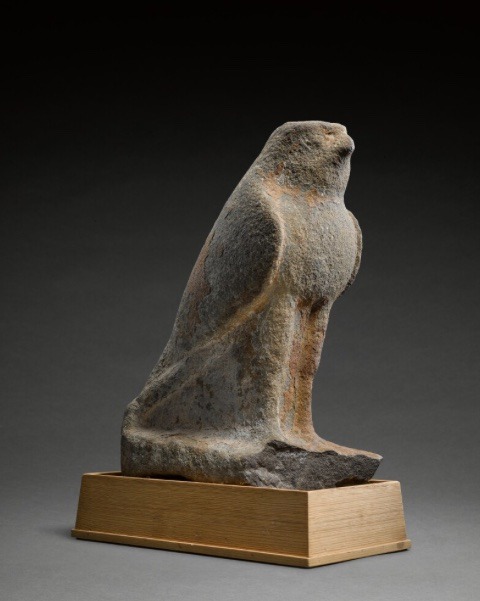

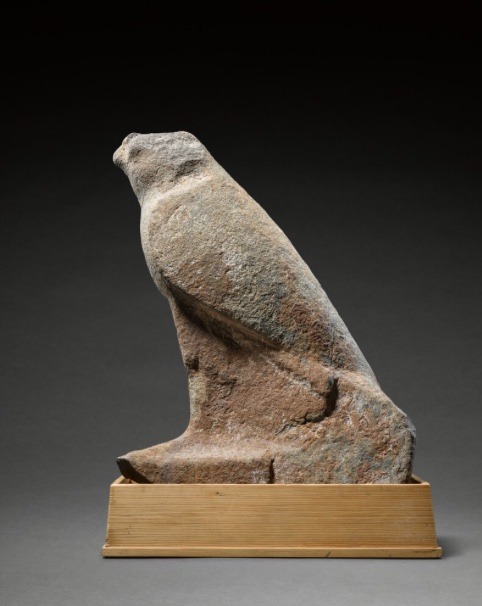
A Large Egyptian Basalt Figure of the Horus Falcon
30th Dynasty/Ptolemaic Period, 380-30 B.C.
Standing on an oblong base with his wings crossed over the tail feathers.
Height 43.4 cm.
#A Large Egyptian Basalt Figure of the Horus Falcon#30th Dynasty/Ptolemaic Period 380-30 B.C.#statue#stone statue#stone sculpture#ancient artifacts#archeology#archeolgst#history#history news#ancient history#ancient culture#ancient civilizations#ancient egypt#egyptian history#egyptian art
67 notes
·
View notes
Note
ANYTHING except death mental punk rock
okokok so this is the biggest mixture but some of my all time favs lol compiled into one long list
headlines - drake
what once was - hers
the 30th - billie eilish
say yes to heaven - lana del ray
good days - SZA
sundress - asap rocky
stargirl interlude - the weeknd
burn, burn, burn - zach bryan
self control - frank ocean
hallucinogenics - matt maeson
california dreamin’ - the mamas & the papas
black friday - tom odell
thinkin bout you - frank ocean
i know - tom odell
you & me - disclosure
making the bed - olivia rodrigo
if u think i’m pretty - artemas
hoax - taylor swift
at last - etta james
confidence - ocean alley
you should probably leave - chris stapleton
lacy - olivia rodrigo
pain, sweet, pain - zach bryan
rough - g-flip
sad girl - lana del ray
mamas boy - dominic fike
thrills - spacey jane
the party & the after party - the weeknd
nothing matters - the last dinner party
tourniquet - zach bryan
take me to church - hozier
reminder - the weeknd
trust - brent faiyaz
broken halos - chris stapleton
the spins - mac miller
kill bill - SZA
homecoming - kanye west
good for you - spacey jane
seasons (waiting on you) - future islands
to be so lonely - harry styles
yellow mellow - ocean alley
i say a little prayer - aretha franklin
i’m not alone 2019 edit - calvin harris
cinnamon girl - lana del ray
the last great american dynasty - taylor swift
bad idea! - girl in red
for emma - bon iver
united in grief - kendrick lamar
woman - harry styles
body paint - the cornerstone
sunny - boney m
gilded lily - the cults
all these things i’ve done - the killers
booster seat - spacey jane
labour - paris paloma
eat your young - hozier
amber - 311
norman fucking rockwell - lana del ray
the love club - lorde
clair de lune - flight facilities
cloudbusting - kate bush
5 notes
·
View notes
Note
You wouldnt happen to see have that analysis for Blue Erlang Shen would you? What you said about his Shu lineage sounded so cool if you don't mind sharing!
Here you go! The post just goes into what it means thematically for Erlang Shen to be depicted as human versus monstrous though wrt blue-green skin, and doesn't go much more into his Shu lineage. Basically all my thoughts about that are in the actual art post, but here's some more info!
I just think it'd make sense if the blue interpretations of Erlang Shen stemmed from Shu artifacts seeing as he's a Sichuanese god and is still widely recognized as a Lord of Sichuan.



[ID: Several variations of the 蜀 Shu character from varying dynasties. End ID]
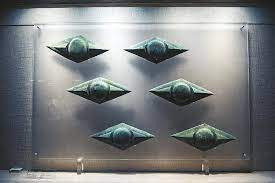
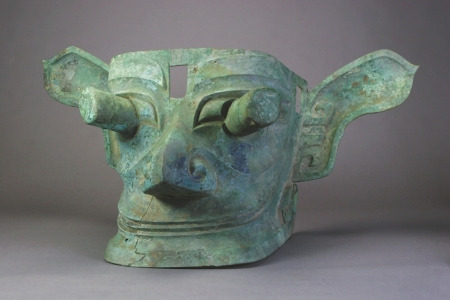
[ID: Photos of Sanxingdui artifacts. One being a set of eye-shaped ornaments. The other being a head or mask with large rods protruding from the eyes and an intentional hole in its forehead. End ID]
People have noted that the motif of eyes reoccurs frequently in Shu artifacts, some coining it "眼睛崇拜". I haven't seen much consensus or discussion on why interpreting Erlang Shen's Heavenly Eye 天眼 as a vertical third eye is so popular, so this is just my own personal theory.
The first king of Shu country, Can Cong (also known as 青衣神 Blue-Green Robed God) was also noted to have vertical eyes 目纵 in texts such as 华阳国志·蜀志 "Records of HuaYang Country- Shu Annals." So. That's something I'm also pointing to. Both the vertical eyes and the blue-green theme.
TAKE THIS BIT WITH GRAIN OF SALT (can't find original source text for it, only references to it, but i still think it's interesting enough to mention):
I've also heard that the archaeologist Wei Juxian 卫聚贤 has records around the 30th Year of Guangxu 光绪三十 of a Shu tradition called “Opening the Heavenly Eye 开天眼" wherein people carved a vertical socket into their forehead and placed a black bead in it to serve as a Heavenly Eye 天眼。 BUT I CAN'T FIND THIS SOURCE TEXT. SO AGAIN TAKE THIS WITH A GRAIN WITH SALT (<- guy covering all his bases bc once I answered an anon's JTTW question and someone quoted it on Iron Fan Princess's wikipedia, please don't do that, im doing very shallow casual research rn just for fun and should not be considered a scholarly source)
#asks#anonymous#journey to the west#jttw#xiyouji#chinese mythology#erlang shen#yang jian#definitely something i wanna research more once my chinese is at the level where i can read scholarly articles
48 notes
·
View notes